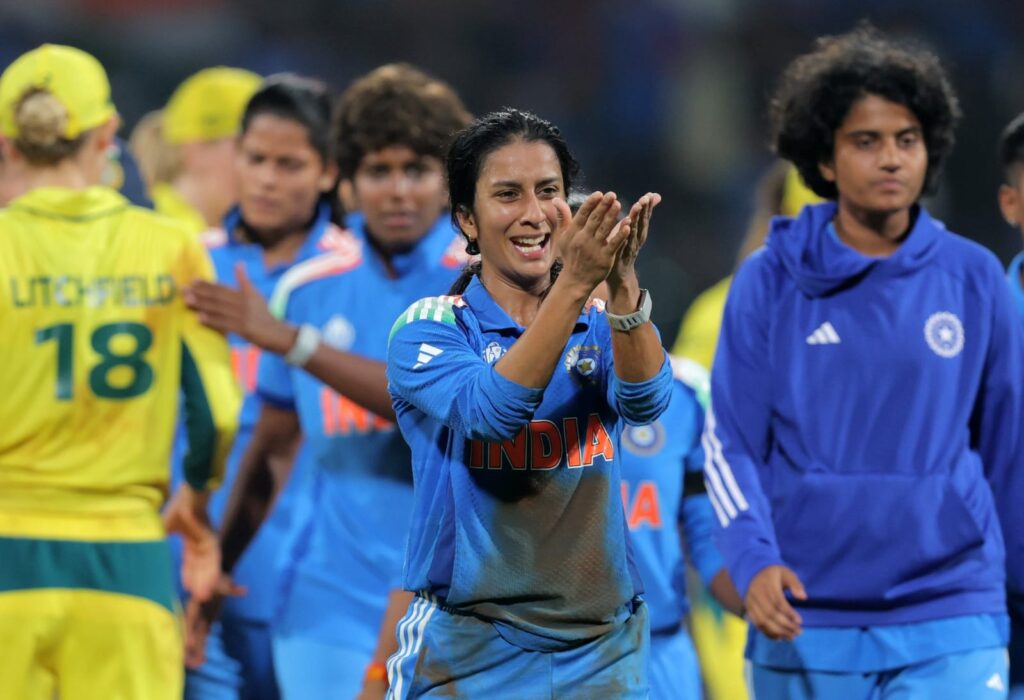
Tonight, as the floodlights blaze over DY Patil Stadium, the most important person in the broadcast compound will not hold a bat or a microphone, but a vision.
The producer of the ICC Women’s World Cup final between India and South Africa isn’t just transmitting a cricket match; they’re authoring a memory. Because this isn’t merely a final. It’s a story waiting to be told right.
Every great broadcast begins with a frame, and a feeling. The producer must decide: What is this match really about? Two nations. Two journeys. Both chasing a maiden crown. India, twice runners-up, are playing for redemption on home soil. South Africa, in their first final, are chasing liberation – from history, from invisibility.
The pre-show script almost writes itself: drone shots of Navi Mumbai’s coastline, archival clips of Harmanpreet Kaur’s 171 at Derby in 2017, cut to her voice today – older, steadier, saying,“If we win this one, women’s cricket will be taken more seriously… not just internationally, but at the domestic level too.”
A good producer knows that statistics become powerful only when they serve story.
Twelve Women’s World Cups have been played so far, hosted in five countries – India and England three times each. Australia have won seven, England four, New Zealand one. India and West Indies have reached finals but never lifted the trophy. Tomorrow guarantees a new champion for the first time in the tournament’s 52-year history. That single fact changes tone and texture. This is not commentary, it’s coronation. The storytelling must make the viewer feel that they’re witnessing something irreversible.
For years, India’s women cricketers played on the margins in empty stadiums, on limited budgets, juggling Railways jobs to fund their dreams. Even after coming under the BCCI in 2006, central contracts arrived only in 2015. Then came 2017.
Harmanpreet’s 171 against Australia lit a spark that turned into a movement. The Lord’s final, though lost, drew record Indian viewership. For the first time, a women’s match trended nationwide. That broadcast – those images and emotions changed everything.
Investment followed inspiration. Central contracts improved, coaches and analysts went full-time, and travel, training, and logistics rose to the level of the men’s game. The Women’s Premier League launched in 2023, putting women’s cricket squarely in prime time. The producer knows they’re not just filming a match – they’re capturing the culmination of that journey. The infrastructure now matches the ambition. The audience is ready. The moment is ripe.
Producing a world final is part choreography, part chaos. The soundtrack must breathe…anthem crescendos, crowd surges, the hush before the first ball. Camera language must shift from the panoramic to the personal – from the sweep of the stadium to Smriti Mandhana’s closed eyes before facing the first delivery, to the bowler’s clenched jaw as she marks her run-up. And across screens, the producer extends the story: 30-second reels of fan reactions, live split-screens of Cape Town and Chennai cheering in sync, behind-the-scenes features that make heroes human.
Today’s broadcast is a referendum on how far women’s cricket has come and how much further it can go. For India, it’s about completing an unfinished chapter. For South Africa, it’s about writing a first one. And for the producer, it’s about turning a sporting event into collective emotion – a final that feels less like a match telecast and more like a turning page in history.




